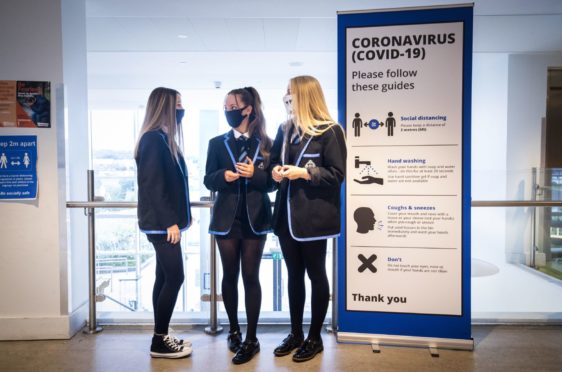The Scottish Government has rejected calls for a national education programme on Covid-19 to be introduced in a bid to tackle misinformation.
National parent councils group, Connect, had written to Education Secretary John Swinney calling for a national approach or lesson plan for teaching children and young people about the virus.
This, the group argued, would provide “clear, factual information” to stop the spread of of misinformation circulating on social media.
In the letter, executive director Eileen Prior said: “We are hearing that many young people are misinformed about Covid-19 and that they are persuaded by some of the unfounded posts on social media.
“Without frightening them, we need schools to lead on providing clear, factual information.
We wrote to @JohnSwinney calling for a national education programme on COVID19 for parents, pupils & school staff. This could have avoided over-testing children, confusion about colds when schools required children to stay off. Read the reply https://t.co/OxA2TJPU5t
— connect_scot (@connect_scot) September 25, 2020
“We are also particularly concerned about the possible negative impact of the wrong kind of messaging on children and young people.
“The messages they receive about individual and collective responsibility, caring for one another etc need to be handled with the utmost care.”
The parent group argued that a Covid specific learning plan would would help combat the stress and anxiety pupils and parents may be feeling now that schools have returned full time, as well as potentially reducing the “over-testing” of children.
“We are hearing that many young people are misinformed about Covid-19 and that they are persuaded by some of the unfounded posts on social media.
Eileen Prior, executive director of Connect
Eileen Prior added: “We would welcome a clear learning or lesson plan, with details set out about what information should be given to children and young people of different ages, and in what formats.
“This must be shared with parents at the same time, so we can all discuss Covid-19 in the same ways, using carefully considered language.
“Anxious and stressed school staff may struggle to deliver Covid-19 lessons, without national guidance, just as parents might struggle with this too.”
Schools’ responsibility
However responding to the requests made in Connect’s letter, the Scottish Government outlined that it was the responsibility of individual schools to “design and deliver a curriculum” best suited to their pupils.
In a letter, it said: “We absolutely agree about the importance of children and young people having access to clear, factual and age appropriate information about Covid-19.
“Schools have a role in providing responses and reassurance to children and young people who have questions or are feeling worried or overwhelmed. We would expect these conversations to be taking place throughout the school day, which would include assemblies and classroom settings rather than in a specific lesson.
“As you are aware, we believe it is best for schools and teachers to design and deliver a curriculum that meets the needs of learners and their communities which are age and stage appropriate, and as a result, to determine what is taught in their classrooms.”
The Scottish Government’s response also pointed to the resources already available to help school staff feel confident in providing “reassurance and answering questions” on the virus.










